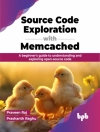Today, the development life cycle of 3D User Interfaces (UIs) mostly remains an art more than a principled-based approach. Several methods [1, 3, 7, 8, 9, 10, 11, 15, 17, 18, 19] have been introduced to decompose this life cycle into steps and sub-steps, but these methods rarely provide the design knowledge that should be typically used for achieving each step. In addition, the development life cycle is more focusing directly on the programming – sues than on the design and analysis phases. This is sometimes reinforced by the fact that available tools for 3D UIs are toolkits, interface builders, r- dering engines, etc. When there is such a development life cycle defined, it is typically structured into the following set of activities: 1. The conceptual phase is characterized by the identification of the content and interaction requests. The meta-author discusses with the interface designer to take advantage of the current interaction technology. The int- face designer receives information about the content. The result of this phase is the production of UI schemes (e. g. , written sentences, visual schemes on paper) for defining classes of interactive experiences (e. g. , class Guided tour). Conceptual schemes are produced both for the final users and the authors. The meta-author has a deep knowledge of the c- tent domain and didactic skills too. He/she communicates with the final user too, in order to focus on didactic aspects of interaction. 2.
Inhaltsverzeichnis
Generating User Interfaces from Conceptual Models: A Model-Transformation Based Approach.- Towards Object Oriented, Uiml-Based Interface Descriptions for Mobile Devices.- Towards A System of Patterns for the Design of Multimodal Interfaces.- Design Options for Multimodal Web Applications.- A Generic Approach for Pen-Based User Interface Development.- Participatory Design Meets Mixed Reality Design Models.- A Method for Developing 3D User Interfaces of Information Systems.- Gest Action3D: A Platform for Studying Displacements and Deformations of 3D Objects Using Hands.- Designing and Developing Multi-User, Multi-Device Web Interfaces.- A System to Support Publishing, Editing, and Creating Web Content for Various Devices.- Transformational Consistency.- Rapid Prototyping of Distributed User Interfaces.- The Comets Inspector.- A Generic Approach for Multi-Device User Interface Rendering with UIML.- Device Independent Layout and Style Editing Using Multi-Level Style Sheets.- Automatic Interface Generation Through Interaction, Users, and Devices Modeling.- The Meta Sketch Editor.- A Hybrid Tool for User Interface Modeling and Prototyping.- Towards A Support of User Interface Design By Composition Rules.- Ideal XML: An Interaction Design Tool.- Integrating Model-Based and Task-Based Approaches to User Interface Generation.- Automated Repair Tool for Usability and Accessibility of Web Sites.- Automating Guidelines Inspection.- Remote Web Usability Evaluation Exploiting Multimodal Information on User Behavior.












